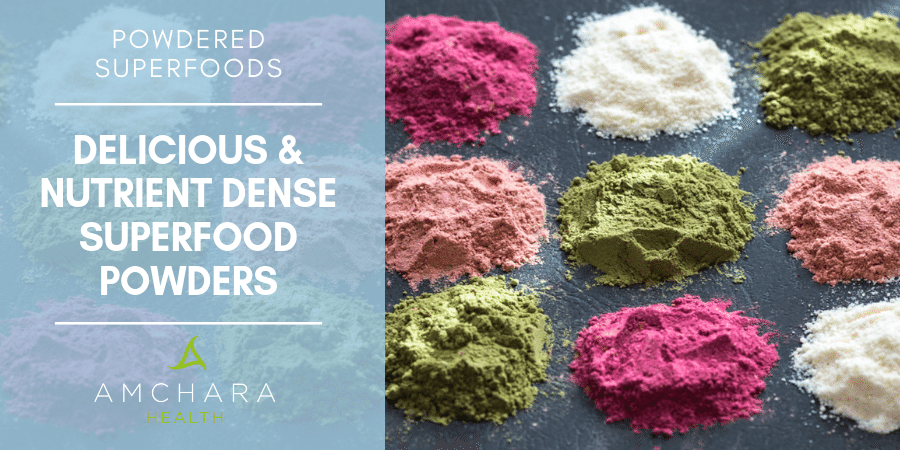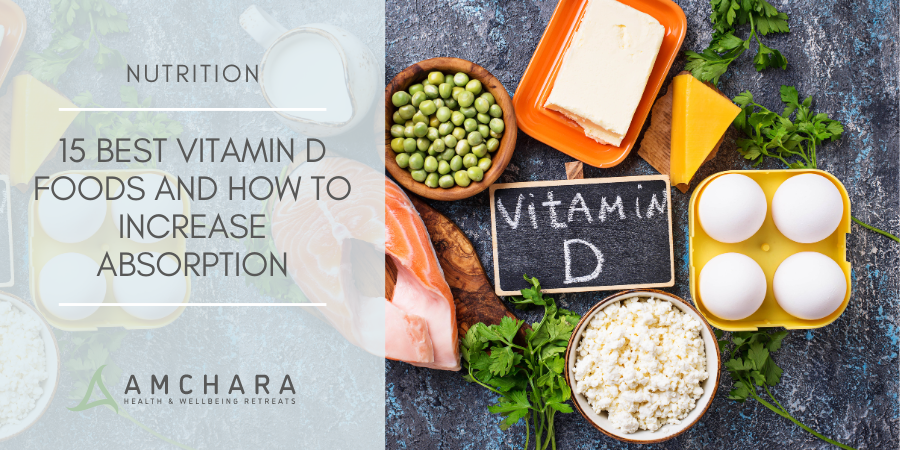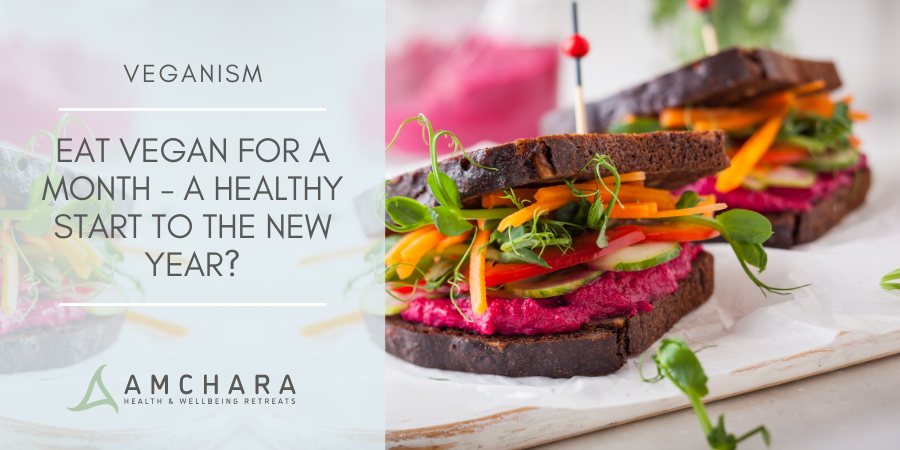Topics Covered in this article:
Although choosing natural, whole foods is essential to support good health, many people turn to powdered superfoods to give their food choices an extra nutritional punch.
Dubbed ‘super powders’, they’re not a replacement for healthy plant-based foods, but they certainly add great taste and value to any eating plan.
What is a Superfood?
These days it seems almost any plant food can be bestowed with the title of superfood.
However, a superfood can be loosely defined as one which contains a good level of health-giving nutrients and therefore beneficial to wellbeing.
Superfood powders are usually made by freeze drying fresh fruit or other parts of the plant.
This method has been found to retain the beneficial antioxidants and other nutrients.
In this article we’ll introduce 11 delicious superfood powders, you’ll find out why they’re a great addition to your healthy food choices and we’ll provide some inspiration on how to use them.
-
Maca
Maca is a root vegetable belonging to the brassica family and related to the radish, which originates in the Andes of Peru.
It’s been cultivated for over 2000 years and has been used traditionally to increase energy and stamina.
Compounds in maca have been investigated in relation to their role in the health of the adrenal glands, otherwise known as our stress glands.
In one study on postmenopausal women, after six weeks of consuming 3.5g maca per day, the women reported less anxiety and depression and increased libido (1).
Other research has noted its beneficial effect on high blood pressure.
Maca is high in potassium, calcium, vitamin C, vitamins B6 and B3, copper and iron, plus it’s a good source of protein.
Maca has an earthy yet sweet, nutty, caramel taste which is great in smoothies, cereal or yoghurt, added to coffee or even savoury dishes such as pancakes or hummus.
Or why not try it sprinkled on unsweetened popcorn?
The flavour of maca can be overpowering, so don’t use too much at first.
-
Acai Berry
These berries, native to the Amazon, grow on a type of palm tree and are about the size of a grape.
They have a thick skin and a large stone.
Acai is a relative of the blueberry.
Acai contains a good level of antioxidants, including anthocyanidins, thought to lower inflammation.
It also contains healthy fats such as omega 6s and 9s, as well as vitamin A and manganese.
Acai has been the subject of some research, with scientists finding blood levels of antioxidants were significantly raised after volunteers had consumed acai juice and pulp.
In test tube studies, acai extract increased the process of autophagy in brain cells (2).
Autophagy is the natural clearing out of old damaged cells which does not happen efficiently in age-related degenerative disorders.
Bear in mind acai tends to be unstable, especially when exposed to light and air, so its antioxidant content may degrade over time.
So it’s best to choose a powder which has been freeze-dried shortly after harvesting.
Acai berry has a sweet yet tart taste which has been likened to raspberries with a hint of chocolate.
Use it in smoothies, on cereal or in protein or granola bars.
-
Camu Camu
Less well-known than other rainforest fruits such as acai, camu camu is the fruit of a small tree in the myrtle family, found in Peru and Brazil.
It’s a plum-coloured berry and looks a little like a cherry.
Camu camu is said to contain at least 30 times more vitamin C than oranges, along with an array of other antioxidants.
In fact, it’s believed to have one of the richest source of antioxidants of all South American fruits – it also contains vitamin C, potassium, zinc, B vitamins, manganese and amino acids.
Camu camu has been studied in relation to its natural anti-inflammatory properties.
Smokers who drank 70ml camu camu juice per day for just one week had decreased levels of inflammatory markers in their blood (3).
One specific substance in camu camu called methylmalate has been found in research to be supportive of liver health (4).
Although camu camu was initially harvested from wild sources, raising concerns as to the sustainability of the crop, recently it has been produced from agricultural land.
This not only provides an income for local smallholders but, since the tree grows on floodplains, it protects against loss of income when agricultural land becomes flooded.
It has a sour, tangy flavour, so it’s best used in combination with sweeter flavours such as fruit juice although it also goes well in salad dressings.
-
Maqui Berry
You may not have heard of this berry, originating from Chile and Argentina, as it’s a relative newcomer to the super powder scene in the UK.
It’s a purple-blue berry also known as the Chilean wineberry.
The entire plant has been used medicinally in Chile for thousands of years.
Maqui berry is a great source of antioxidants, especially polyphenols and a specific class of anthocyanidins, which give the fruit its purple colour.
These antioxidants have been researched for their beneficial effects on cardiovascular disease, blood sugar control, skin health and anti-inflammatory properties (5).
It’s rich in potassium, while it’s also a source of vitamin C, iron and calcium.
Maqui berry tastes a little like a tangy version of a blueberry or raspberry, and works well in smoothies – the tart taste contrasts well with fruit juice.
-
Spirulina
This green food is derived from freshwater algae – simply dried to a powder.
Spirulina is grown across the world, and it has a long history of human consumption, being eaten by the Aztecs as early as the 16 th century.
Spirulina is rich in chlorophyll which gives it a fantastic colour.
It also contains a good level of protein, fatty acids, iron, magnesium, calcium and B vitamins.
This superfood has been extensively researched and is used in developing nations to combat heavy metal toxicity.
As well as being anti-inflammatory and antioxidant, spirulina has been found in studies to support liver health and regulate blood pressure and cholesterol levels (6).
Use spirulina in smoothies, add to raw brownies or protein balls or simply mix with water or juice.
-
Chlorella
Chlorella is again derived from freshwater algae, but it has hard cell walls made of cellulose which must be mechanically broken down when it’s harvested to enable us to digest it.
You’ll see it referred to as ‘cell-wall cracked chlorella’.
It’s native to Taiwan and Japan.
Chlorella is an excellent source of protein, chlorophyll, fibre, iron, vitamin C and omega-3 essential fatty acids, as well as antioxidants, including lutein and zeaxanthin which have been extensively studied for their role in supporting eye health.
Chlorella has also been studied in relation to its beneficial effects on hypertension, cholesterol levels and immune function.
Like spirulina, it’s often used to assist the removal of heavy metals from the body.
Both spirulina and chlorella can taste a little like pond water, so it’s best to disguise their flavour in smoothies or mixed with yoghurt.
Chlorella tastes great alongside fruity flavours.
-
Cacao
A nutrient-dense powder based on chocolate?
Oh yes. Cacao is made from cacao beans, the seeds of the cacao tree.
Cacao beans are the raw ingredient from which chocolate is made, but cacao is derived from the raw beans, whereas commercially-available cocoa comes from roasted beans or is heated during its production.
This means the nutrients are preserved in cacao and not depleted as a result of processing.
Cacao is a great source of magnesium, iron, calcium and fibre, as well as flavonoids – a type of antioxidant.
Cacao appears to have a beneficial effect on cardiovascular disease as well as helping blood vessels to relax, so may be of use in regulating blood pressure.
These effects may be connected with the antioxidants or its magnesium content.
Cacao has also been seen in studies to increase blood flow to brain cells, so may be protective against dementia and stroke.
Finally, substances in cacao can increase the production of certain neurotransmitters in the brain associated with pleasure and focus.
Cacao is available as a powder or as cacao nibs, which are both delicious in smoothies, as a healthy hot chocolate with added almond, oat or coconut milk, in desserts, yoghurt or in baked goods.
-
Wheatgrass
The earthy taste of wheatgrass will be familiar to many.
Young shoots of wheat are dried and powdered.
Unlike wheat grains, wheatgrass does not contain gluten.
Wheatgrass is rich in iron, calcium, magnesium, amino acids and vitamins A, C and E, as well as antioxidants such as glutathione.
Research has linked wheatgrass to lower cholesterol levels, as well as decreased inflammation.
In one study, patients suffering from ulcerative colitis were given wheatgrass juice daily for one month.
Symptoms of the disease were reduced (7).
Wheatgrass powder can be added to juice, tea, salad dressings or used to make a wheatgrass latte with nut milk.
The taste has been likened to mild green tea.
It’s a good idea to choose organic wheatgrass, as commercial production methods in some areas of the world can result in wheatgrass being contaminated with pollutants.
-
Baobab
This powder is made from the fruit of the baobab tree, found in Africa and Madagascar.
The tree is known as the ‘Tree of Life’.
The powder is simply made by drying and grinding the fruit pulp.
It’s high in soluble fibre, which provides food for the beneficial bacteria living in our gut microbiome.
It also contains vitamins C, B3 and B6, magnesium, calcium, potassium, iron and zinc.
Baobab powder has been found in studies to improve blood sugar control (8).
It contains a good level of antioxidants with anti-inflammatory properties.
Mix this tangy-tasting powder into juice or smoothies, or try in porridge, in pancakes or even add a spoonful to herbal tea.
-
Moringa
This superfood powder is sourced from the leaves of a fast-growing tree native to Africa and Asia.
It’s also called the drumstick tree.
It contains vitamins A, B2, B6, C, iron and magnesium. It is also full of antioxidants, particularly eye-supporting lutein.
In studies, moringa leaf powder was found to reduce blood glucose levels following a test meal containing carbohydrate (9).
It may also be of use in regulating cholesterol levels.
It has a rich, nutty flavour with an undertone of bitterness and works well in smoothies and shots.
-
Lucuma
This is the fruit of a tree native to Peru and Chile, nicknamed the ‘gold of the Incas’.
With its hard green outer skin and yellow flesh it looks a little like a cross between an avocado and an unripe mango.
It has a sweet flavour reminiscent of sweet potato and a sugar-like texture.
Lucuma has high levels of fibre, vitamin C, beta carotene, niacin and antioxidants, including polyphenols and carotenoids, known to protect eye health.
Lucuma has been found to assist with blood sugar control (10).
Because it’s sweet tasting, lucuma can be an excellent alternative to sugar in desserts and baking.
Use double the amount of lucuma to sugar in any given recipe, as it’s not as sweet as sugar.
It has a different texture to sugar so may not work in all recipes.
Lucuma can also be added to smoothies, cereal, yoghurt or nut milks to add sweetness.
How to Use Super Powders
The possibilities are endless!
Add to smoothies, mix with yoghurt or juice, sprinkle on cereal, as an ingredient in protein energy balls or raw brownies.
Or why not mix a teaspoon of your favourite superfood powder with lime juice and freeze in ice-cube trays to give a healthy and cooling boost to any drink?
Takeaway
If you would like to further explore the relationship between nutrition and health, a consultation with an Amchara Health Practitioner can help you make informed food choices for your unique body.
Why not combine this with a stay at an Amchara wellness retreat?
Here you can try a juice cleanse, enhanced by superfood shots such as maca and wheatgrass, or enjoy delicious raw food created by our chefs.
We’re dedicated to providing you with both insightful information and evidence-based content.
Did you find this article useful?
We’d love to hear your thoughts, get in touch!
Let us know your top tips for using your favourite delicious superfood powders.
READ THIS NEXT:




